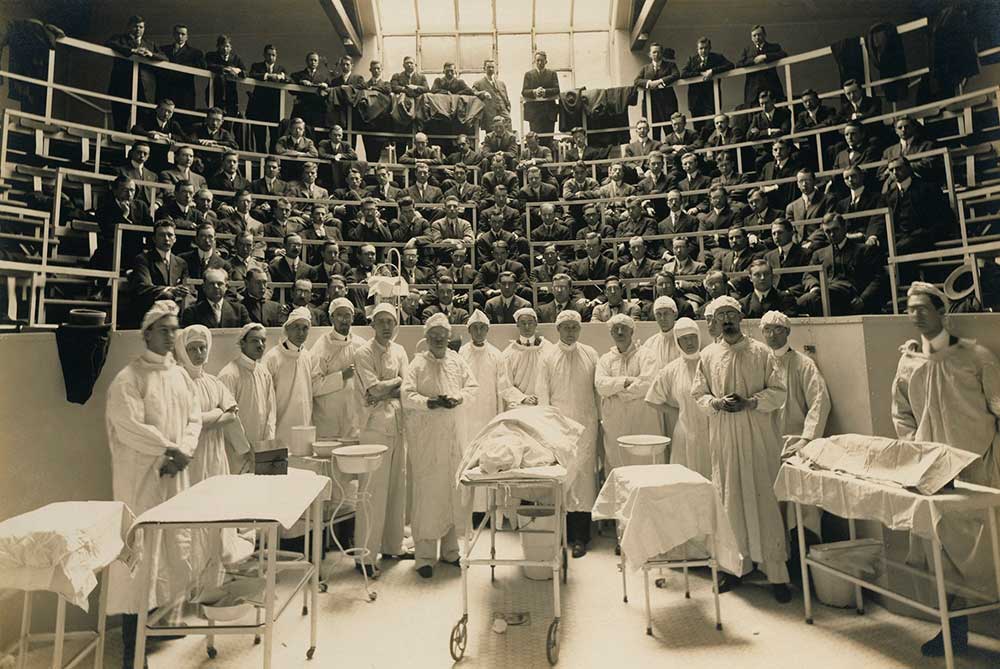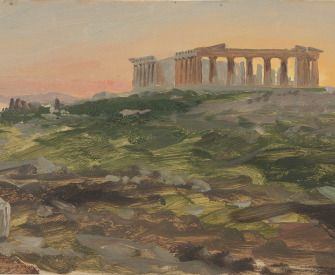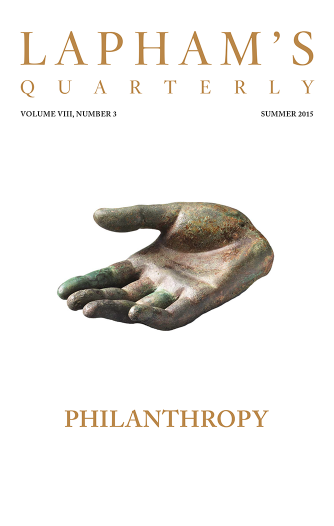But of the tree of the knowledge of good and evil, you shall not eat, for in the day that you eat of it you shall surely die.
—Genesis, 900 BCSchoolboy, Where Are You Going?
Scribal education in the ancient Mesopotamian tablet house.
By Moudhy Al-Rashid

A clay tablet featuring a mathematical problem with one side showing a teacher’s neat notation and the other a student’s sloppier hand, Old Babylonian. Peabody Museum of Natural History, Yale University.
In the eighteenth century bc, a preteen student in what is now southern Iraq grew so frustrated with a vocabulary exercise that he lifted a clay tablet he was writing on, brought it to his lips, and bit down. The impressions of his teeth remain in the corner of that tablet, which was unearthed almost four thousand years later in excavations of the ancient city of Nippur, part of the vast Babylonian Empire built along the banks of the Tigris and Euphrates Rivers. The clay these rivers deposited onto the surrounding plains would eventually form the medium for writing shared by the civilizations that called Mesopotamia home in antiquity, including the Babylonians.
Known as cuneiform because of its characteristic wedges (cuneus means “wedge” in Latin), this writing system preserves hundreds of thousands of snapshots of life in ancient Mesopotamia, from the diplomatic spats of royalty to receipts for beer, law collections to lullabies. Cuneiform tablets tell countless stories, including those of children learning the very writing system that has preserved these clay pages of history. Initially developed as a record-keeping tool near the end of the fourth millennium bc, cuneiform was first used to write the Sumerian language before being adapted in the last half of the third millennium bc to write the unrelated Akkadian language. After the fall of the last Sumerian dynasty, around 2000 bc, the political landscape of ancient Mesopotamia gave way to the Akkadian-speaking Babylonians in the south and their Assyrian neighbors to the north. Their shared intellectual heritage, confined to schools and professional scholarly networks, kept Sumerian alive long after the lifetimes of its last speakers.
“Schoolboy, where have you been going so long?” reads the first line of “Schooldays,” a work of literature written in Sumerian. Dozens of fragmentary copies of this text made by students were uncovered in Nippur, and they preserve a story about a fictional boy who goes to the eduba, which translates loosely to “tablet house” or “school.” The work tells us less about the realities of life in school and more about the types of stories included in the scribal curriculum, but it nevertheless provides some tantalizing hints of student life:
I recited my tablet. I ate my lunch.
I prepared, wrote, and finished my tablets.
His mother packs a lunch of “two breads” for him, and his schoolteacher recites words for him to copy onto a tablet. This mundane list of activities takes a dark turn about twenty lines in, when the student’s heart is gripped by fear at the prospect of beatings for minor missteps like writing with a messy hand or speaking Sumerian badly. “I neglected the scribal art,” he laments. “I forsook the scribal art.” Yet his teacher goes on to praise him, calling him “exalted” and “a hero.” “Schooldays” celebrates the gifts of literacy and wisdom that education imparts, and it ends with praise for Nisaba, the goddess of writing and a patron deity of scribes.
A similar Sumerian story, labeled “Eduba R” by modern scholars, features a dialogue between a teacher and a student who is challenged to recite the school’s regulations. “If you were to ask me about the rules of the school,” the student replies, “I would be speaking from sunrise until sunset!” This bit of banter is a far cry from the beatings of “Schooldays,” and after the dialogue, the text describes the pupils gathering to recite arithmetic and vocabulary. The extant sections that follow provide glimpses of the everyday tasks of schooling, such as students flattening their clay tablets before writing on them and, eventually, wetting them for reuse.
Like any literary work, “Schooldays,” “Eduba R,” and similar stories must have drawn some elements from reality, including the obvious fact that Babylonian students were learning the Sumerian language, by then long dead. The expansion and adaptation of cuneiform to represent Akkadian reflected a deliberate choice by the Babylonians and others to preserve the language of their predecessors. In the words of Agnete Lassen—who, as a curator of the Yale Babylonian Collection, has dedicated her career to the history and heritage of ancient Mesopotamia—“almost four thousand years ago, people were thinking about cultural preservation and actively preserving their learning for future generations.”
“Schooldays” and “Eduba R” show that scribal schools stayed loyal to the Sumerian language despite the growing temporal gulf between its ancient speakers and the later students who learned these stories. But it is otherwise difficult to disentangle fiction from fact. The stories may exaggerate elements of life in the eduba for didactic effect or humor, and they perhaps obscure as much as they illuminate the realities of learning how to write in clay. Even if a modern reader were to take the details in these stories at face value, they inevitably reduce education in ancient Babylonia to the experiences of a handful of archetypal students.
We need not despair at these stories’ shortcomings, thanks to an unassuming house found among the ruins of Nippur. Known as House F in the mid-twentieth-century archaeological reports of excavation teams from the University of Pennsylvania and the Oriental Institute of the University of Chicago, this dwelling had a small courtyard bordered by three small rooms and one large back room, which might have been an additional courtyard. Nothing about this mud-brick structure stands out until you count the number of clay tablets, some whole but many broken, found within its walls. Whereas archaeologists excavated some 200 tablets and fragments from neighboring houses, House F yielded 1,425 specimens in the first field season alone. According to Eleanor Robson, a leading scholar of the history of knowledge in ancient Mesopotamia, “tablets were built into the very floors, walls, and furniture of the rooms,” making the house an eduba in the truest sense of the word.
The tablets found in House F and in similar buildings throughout southern Mesopotamia have made it possible to reconstruct every stage of scribal education in eighteenth-century-bc Babylonia, from a child’s first wedge to a more advanced student’s copy of “Schooldays.”

Courtyard of the Ben Youssef Madrassa, Marrakech, Morocco. Photograph by Manuel Cohen. © Manuel Cohen / Art Resource, NY.
Some of the tablets show children’s first attempts to write in cuneiform by using a reed stylus to impress a single wedge or sign over and over again into a flattened mass of wet clay. The lines might be uneven or the signs too big for the size of the tablet. Fingerprints and fingernail marks interrupt the messy impressed triangles, suggesting that some of these young students had tried to erase their work or had yet to learn how to hold the tablet without their fingers leaving as many marks as the stylus.
Practice eventually made perfect, and students moved on to basic lists of signs and words that, remarkably, reproduce or revisit the earliest texts from the dawn of writing. Writing in ancient Mesopotamia developed as an accounting tool at the end of the fourth millennium bc in Uruk. Alongside early accounting records, scribes composed thematically arranged inventories of the signs encountered in their day-to-day work in order to standardize and teach the fledgling script. There remains much for scholars to learn about these early lists, from the precise meaning of the signs to their philosophical import. What is clear is that lists became a mainstay of scribal education and scholarship until the final years of cuneiform writing, sometime in the first few centuries of the Common Era.
The tooth-marked tablet from Nippur preserves more than the dental records of a frustrated—or perhaps peer-pressured or peckish—child. It also preserves part of a lexical text known as Proto-Ea, which lists Sumerian signs and their pronunciation. Such lists preserved and taught the correct usage of cuneiform signs and vocabulary that students had to master long before they could move on to anything like “Schooldays.” Sometimes a teacher would copy out a list on the left side of a tablet for a student to replicate on the right side, or write out an exercise on one face of a tablet for the student to copy out on the reverse. Students copied lists of gods, types of wood, containers and their contents, professions, body parts, and more in order to learn the building blocks of the writing system and the languages it was used to record. More advanced lists even exploited the many layers of meaning in cuneiform signs to teach analogical reasoning alongside vocabulary. The sign a, for example, represents the Sumerian word for “water,” “semen,” and “father,” among other things. While these meanings may seem unrelated, it is possible to suggest that both water and semen are life-giving liquids, with the latter associated with paternity, to account for the sign’s many meanings. In addition to representing a whole word, the same sign can more simply represent the sound a within a word spelled out syllabically.
Because the vast majority of cuneiform texts are unsigned, not much is known about the identities of the eduba students of the second millennium bc. Compositions like “Schooldays” tell of fictional boys reciting from tablets and avoiding beatings, but there is evidence that girls also trained to become scribes. Around the same time that House F was used as a school, an excerpt of a list much like Proto-Ea was written in clay, likely in a city about a hundred miles to the northwest called Sippar, where a community of women known as naditu lived at the Ebabbar temple, devoted to the worship of the sun god Shamash. The final lines of this exercise read, “The hand of Belti-reminni, female scribe,” in handwriting matching that of a clay copy of the Sumerian hymn known today as “The Hymn to the Hoe,” a playful and pun-filled ode to the agricultural tool that showcases the highest levels of scribal training.
School tablets found in the houses of naditu suggest that these women were literate and underwent training in line with that of standard scribal schools in order to serve the temple community’s administrative needs. Extant sources suggest that girls undertook scribal learning in far fewer numbers than boys, and only a handful of surviving school texts from the early second millennium bc are signed with the informative, if impersonal, “hand of a female scribe.” At the same time, the patron deity of scribes was a goddess, the earliest named author was a woman named Enheduanna, and texts written by women survive from most periods of ancient Mesopotamian history.
After a student had mastered the basics of cuneiform, the next phase of education introduced more advanced lists and mathematics, which students had to learn to help them carry out practical calculations in their future roles. These occasionally took the form of word problems akin to the ones that left me mystified and stressed as an elementary school student. One text lists twenty-three word problems relating to a “little canal.” To solve them, students were expected to calculate measurements of time, the dimensions of canals, and even the wages of canal excavators. Given the dimensions of a canal, students determined how many days it would take to dig it, or conversely, given the number of days a canal’s excavation took, students calculated its dimensions. In other problems, they learned to calculate the areas of triangles, trapezoids, and circles, most likely the foundation for work relating to the area measurements of fields.
These practical exercises preserve some breathtaking moments in the history of mathematics. One tablet shaped like a large lentil features a faint circle in its center with numbers in various positions around it. Just above the shape is the number three, which modern scholars have taken to be a nearly four-thousand-year-old approximation of pi. Another similarly shaped tablet shows an accurate calculation of the square root of two and a diagram that suggests knowledge of the Pythagorean theorem well over a millennium before its namesake Greek philosopher’s birth. Although the equation as we know it is nowhere written down in clay, there is evidence that Babylonians understood its principles and applications.
One tablet, known as Plimpton 322 after one of its modern owners, has made headlines several times over the past few decades for showcasing Babylonian knowledge of the theorem. Each of the tablet’s columns lists numbers, including integers that satisfy the formula a2 + b2 = c2. To ascertain the tablet’s purpose, Robson considered its mathematical content as well as its historical and intellectual context in her 2008 book Mathematics in Ancient Iraq, deducing that it was most likely a “list of regular reciprocal pairs” constructed with basic techniques taught in scribal schools for likely use in that very setting. The word problems, reciprocals lists, and lenticular exercises enjoyed and endured by Babylonian students in the early second millennium bc represent a major part—Robson estimates about 80 percent—of the published corpus of mathematical texts from ancient Mesopotamia.
The final phase of scribal education introduced more complex assignments, including proverbs, mock legal contracts, and eventually works of Sumerian literature like “Schooldays,” “Eduba R,” and “The Hymn to the Hoe.” Such literature is in many ways a product of scribal education, which required students to reproduce these texts in various ways. “A scribe who does not know Sumerian,” reads one Sumerian proverb that Babylonian scribes-in-training had to learn, “what kind of scribe is that?” Another asks, “A scribe who does not know Sumerian, from where will he produce a translation?” Other proverbs preserve kernels of wisdom—and some crude humor—outside scribal education. “Something that has never occurred since time immemorial: a young woman did not fart in her husband’s embrace,” one quips, while another laments a penis that “hangs like a damp reed” after excessive ejaculation.
These proverbs served as memorable tools to teach students not morality but increasingly advanced Sumerian vocabulary. Embedded in these collections of maxims are word associations, visual and phonological puns, and other tools to help students truly master the language and writing system. The Sumerian proverbs, including the ones about Sumerian itself, return us to the fundamentally bilingual nature of education in ancient Babylonia already apparent from “Schooldays.”
The tablets found in House F and similar archaeological contexts tell us much about education and scholarship, but they also immortalize moments in the lives of real children. Fingerprints cover the lenticular tablet with the square root of two, a poignant reminder that it was a young person who drew the square-shaped diagram and impressed the numerical wedges that have helped rewrite the history of mathematics. Another tablet features an angular drawing of a seated teacher below an excerpt from a Sumerian story about an enslaved girl. Could a bored student have resorted to doodling after finishing a literary assignment a little earlier than others in the class?
One lump of clay covered in messy signs looks as though someone tried to squish it, perhaps in frustration or merely as a sign that the practice tablet’s use had come to an end. A few fragments of gaming boards traced into clay tablets have survived from schools in ancient Babylonia, including one found in House F. One can imagine students at “recess” eating their lunches of “two breads” in a courtyard while moving a game piece across its squares.

Medical school class and staff with cadaver, c. 1900. Smithsonian American Art Museum, Washington, DC, museum purchase from the Charles Isaacs Collection made possible in part by the Luisita L. and Franz H. Denghausen Endowment.
Clay tablets from ancient Babylonian schools immortalize more than what students had to learn and how they learned it. They leave behind traces of the students themselves, including sometimes even their names, as in the case of the female scribe Belti-reminni, and hint at what their lives at school might have looked like. The texts that students copied at school were not meant for posterity, even though they have survived in such quantities and detail that it sometimes feels as though they were deliberately left behind for future students seeking to piece together the stories of their ancient counterparts.
These tablets were the rough drafts and scratch pads of the ancient world. They speak for students who spent a now uncountable number of days of their lives writing lists, memorizing lines, and learning how to multiply. They worked hard, lost patience, got nervous and maybe even bored. If “Schooldays” is to be believed, the students who copied the work must have had a sense of the importance of their education. At the start of the text, the student cowers before the “school father,” or teacher. At the end, the student’s father meets the “school father” and thanks him for letting his little one enter the realm of “silver” knowledge and for illuminating what once remained hidden behind cuneiform characters. “Seated in the seat of honor,” the teacher praises the boy’s dedication and “with joyful heart” predicts a bright future:
Young man, because you did not neglect my word, did not forsake it,
May you reach the pinnacle of the scribal art, achieve it completely.
Of your brothers, may you be their leader,
Of your companions, may you be their hero,
Exalted schoolboy may you be!
In addition to helping students learn Sumerian, “Schooldays” might have reminded them that the transformation from cowering student to exalted scribe—and champion of the goddess Nisaba—was worth the work. Along the way, their doodles, balled-up lumps of clay, and even bite marks remind us that the more things change, the more they stay the same. While education has changed much since these early moments memorialized in clay, some common denominators continue to connect us, four thousand years later, to the Babylonian kid who bit a tablet.

